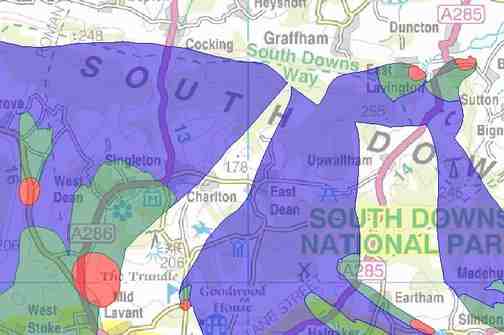What Are Groundwater Source Protection Zones?| WTE
What is a Groundwater Source Protection Zone?
The UK is not building new reservoirs. As the population increases, more and more groundwater is being extracted by the Water Companies for public supply. Groundwater now provides a third of our drinking water in England and Wales. In some areas of Southern England, groundwater supplies up to 80% of the drinking water and it is crucial that these sources of supply are protected to ensure that tap water is completely safe to drink.
The Environment Agency (E.A.) has designated Groundwater Source Protection Zones (SPZs) for 2000 groundwater supply sources. These include wells, boreholes and springs used for public drinking water supply. The groundwater from these zones all finishes up in a public drinking water supply, somewhere, and it is essential to protect it from contamination from any activities that might cause pollution in the area. The closer the activity to the actual borehole, the greater the risk. The maps show three main zones (inner, outer and total catchment) and a fourth zone of special interest, which is occasionally applied to a groundwater source.
The E.A. uses the zones in conjunction with their Groundwater Protection Policy to set up pollution prevention measures in areas which are at a higher risk, and to monitor the activities of potential polluters nearby.
The shape and size of a zone depends on the condition of the ground, how the groundwater flows through the ground, how fast it reaches the abstraction point from the pollution source and other environmental factors. From this the E.A. can develop a model of the groundwater environment on which to define the zones.
They divide groundwater source catchments into three zones. The zones are divided as follows:
SPZ1 – Inner groundwater source protection zone (RED)
Defined as the 50 day travel time from any point below the water table to the source. This zone has a minimum radius of 50 metres.
SPZ2 – Outer source protection zone (GREEN)
Defined by a 400 day travel time from a point below the water table. This zone has a minimum radius of 250 or 500 metres around the source, depending on the size of the abstraction.
SPZ3 – Source catchment protection zone (PURPLE)
Defined as the area around a supply source within which all groundwater is presumed to end up at at the abstraction point. In confined aquifers, the source catchment area may extend for some distance from the source.
Former zone of special interest
A fourth zone SPZ4 or ‘Zone of Special Interest’ was previously defined for some sources. SPZ4 usually represented a surface water source, stream, brook, etc which drains into the underground aquifer feeding the groundwater supply. In the future this zone will be incorporated into one of the other zones, SPZ 1, 2 or 3, whichever is appropriate in the particular case, or become a safeguard zone.
It is obvious that our groundwaters MUST be protected if we are to continue to enjoy clean, unpolluted tap water in the UK. For this reason, all sources of pollution within the zones are strictly controlled and as septic tank soakaways are a major source of groundwater pollution, they are not allowed to discharge into SPZ1 areas and are also often refused permission for SPZ2 and SPZ3 zones also.
It is essential that you check these zones before you buy a house with a septic tank, or consider buying a replacement septic tank as the E.A. may refuse permission for its existence. See useful links page for the link to the Groundwater Source Protection Zones Map.
